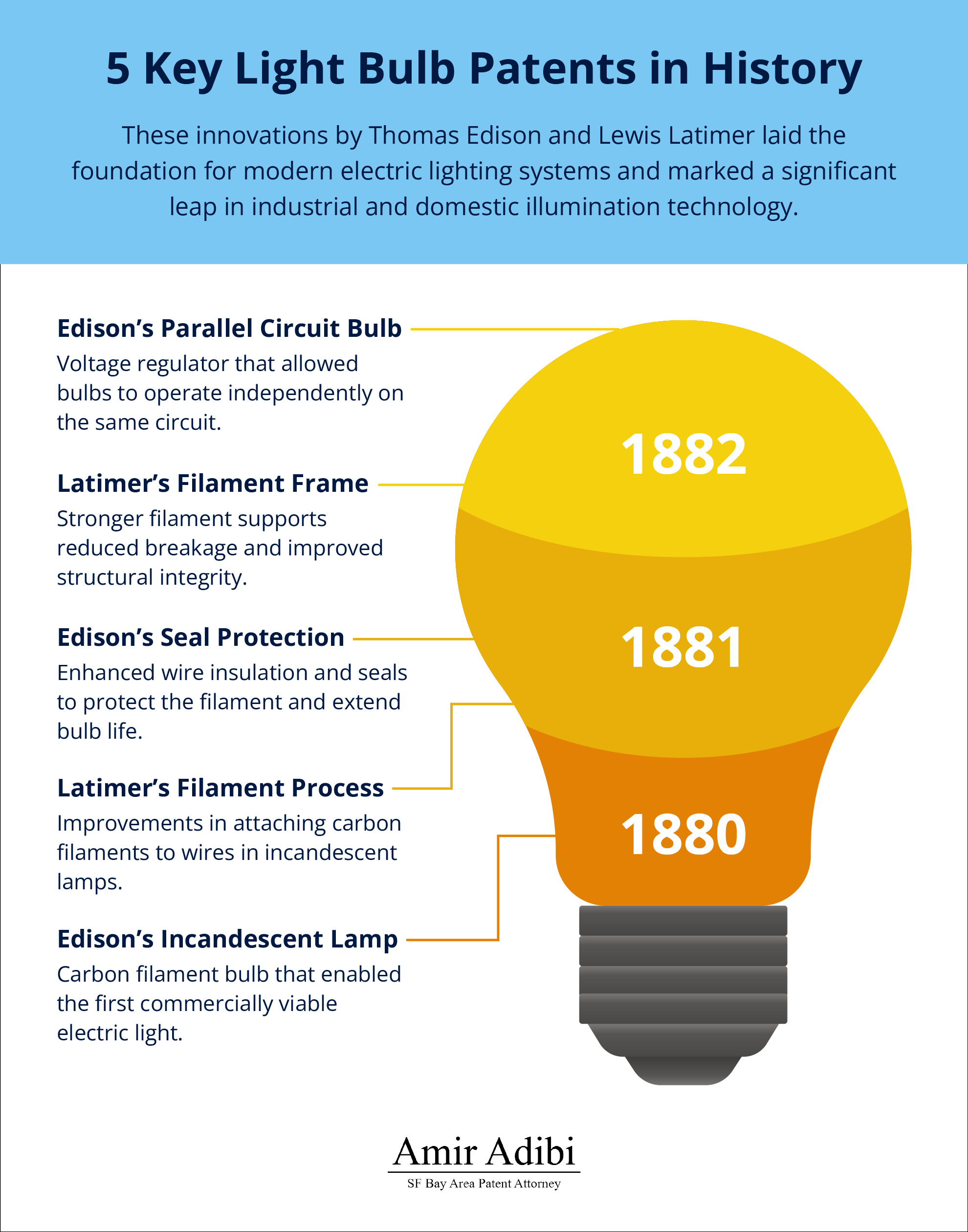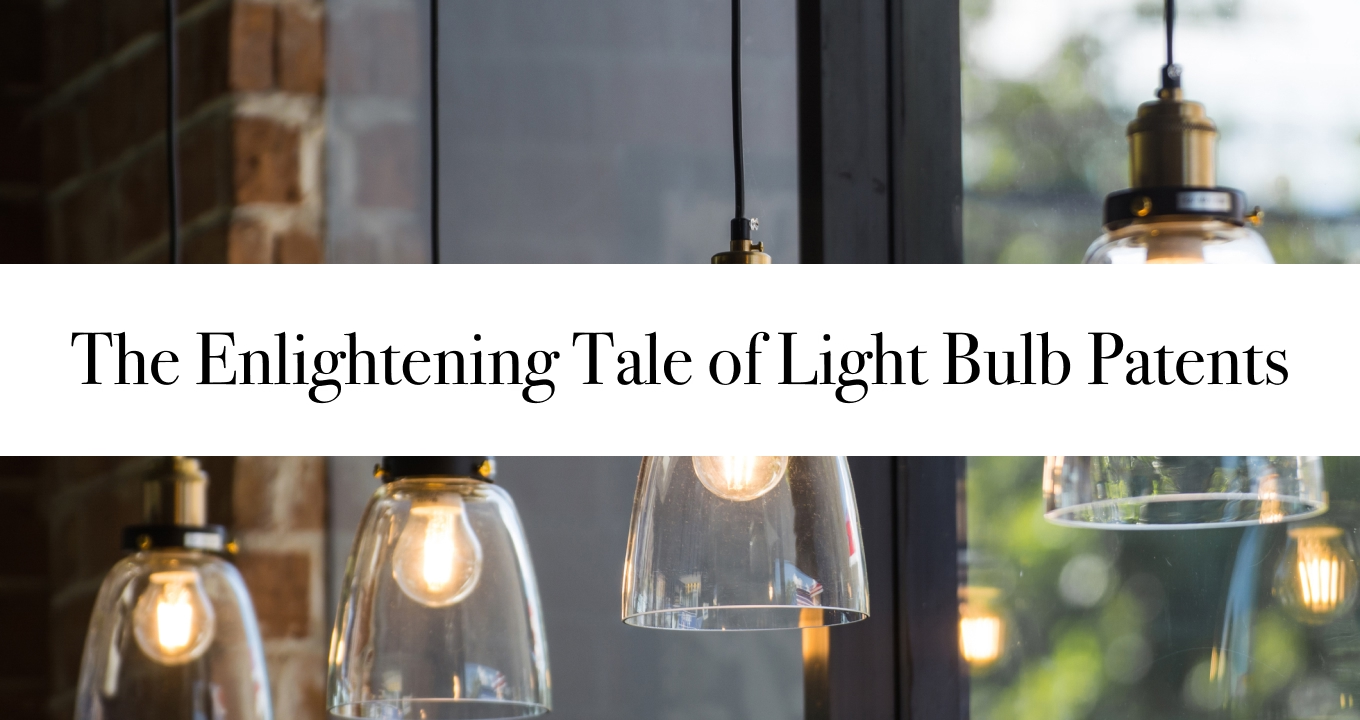Visualize an era when twilight cast entire cities into darkness—a time when the onset of night marked the slowing of activities and the dependence on the flickering glow of candles for illumination. In that age, electric lighting was nothing short of miraculous.
The light bulb patent of 1880 stands as one of the most transformative moments in history. It redefined our relationship with night and ignited a series of innovations that continue to influence modern technology. While Thomas Edison often takes center stage as the pioneer of electric lighting, a closer look reveals a rich tapestry of contributions, struggles, and triumphs that extended far beyond a single inventor.
Key Takeaways
- Edison’s 1880 light bulb patent for the incandescent light bulb was a turning point that transformed electric lighting from a luxury to a necessity.
- The strategic use of patents protected groundbreaking ideas and drove the commercialization and widespread adoption of electric light.
- Today’s patent battles, reminiscent of Edison’s legal warfare, continue influencing the tech industry.

The Genesis of the Light Bulb Patent
The story of the electric light bulb patent unfolds against the backdrop of fierce competition and rapid technological evolution. Inventors around the world experimented with various methods to harness and control electricity, leading to an environment rich in patent filings. These patents did more than protect inventions—they established the legal framework to fuel an entire industry and emphasized the importance of acquiring key patents.
As the light bulb patent history demonstrates, innovation rarely emerges from a single flash of inspiration. Instead, it evolves through persistent research, iterative improvements, and collaboration among brilliant minds. Early patents detailed advancements in filament materials, vacuum technology, and electrical circuitry. Each technical improvement was a stepping stone toward transforming electric light from an experimental gadget into a household necessity.
The Role of Thomas Edison in the Light Bulb Patent Revolution
Although Edison did not create the first electric light, his approach and persistence transformed the technology into something practical and commercially viable. On January 27, 1880, Edison secured U.S. Patent No. 223,898 for an “Electric Lamp” featuring a carbon filament—a milestone achieved after relentless trial and error in his Menlo Park laboratory in New Jersey.
Edison and his dedicated team experimented with over 6,000 materials before discovering that carbonized bamboo produced a filament capable of lasting more than 1,200 hours. By actively testing and refining his designs, Edison invented a durable light bulb and introduced a complete electrical system that could be widely deployed. With critical financial backing from figures like J.P. Morgan, Edison launched his Electric Light Company and embarked on a journey that would forever alter human society.
Edison’s vigorous use of patents to secure his technological edge was as much a legal strategy as a scientific one. He fought aggressively in courtrooms to ward off competitors, using his intellectual property as a weapon in high-stakes battles that remind us of today’s patent disputes between technology giants. For innovators seeking to understand the intersection of invention and litigation, patent lawyers provide expert guidance on how to leverage intellectual property patents to create business empires.
Lewis Latimer’s Contributions to the Light Bulb
Lewis Latimer emerges from history as a figure whose brilliance and perseverance were often overshadowed by his better-known contemporaries. Far more than a mere assistant, Latimer refined Edison’s design at a time when innovation was steeped in both technical challenges and deep-seated social prejudices.
Latimer, an African American inventor working in the late 19th century, faced barriers that extended well beyond scientific hurdles. Despite these challenges, he patented an improved method for producing carbon filaments in 1881 (U.S. Patent No. 247,097). His technique extended the life of the light bulb patent and drastically reduced production costs—turning electric lighting from an elite luxury into a commodity accessible to ordinary households.
Latimer’s work went beyond engineering; it was an act of defiance against a system that sought to marginalize his contributions. When he joined the Edison Electric Light Company in 1884, his expertise in technical drawing and patent documentation became instrumental. He ensured that Edison’s intellectual property was rigorously defended, and his improvements provided the technical backbone that made mass production of bulbs feasible.
Latimer’s contributions were revolutionary in an era when recognition was often reserved for white male inventors. His 1890 book, Incandescent Electric Lighting, became a critical reference in the industry, illuminating the path for future generations of inventors. His journey reminds us that innovation is enriched by diverse perspectives—a lesson that resonates powerfully with modern inventors and technology enthusiasts.
Commercialization and Legacy
The evolution of the light bulb from an experimental device to a ubiquitous necessity is a story of relentless innovation and strategic business practices. Electric lighting reshaped society by extending the productive hours of factories, enhancing urban safety, and revolutionizing social life.
The Role of the Edison Company and General Electric
Edison’s light bulb patent not only marked a technical breakthrough—it also laid the foundation for a vast business empire. The Edison Electric Light Company, established in 1878, demonstrated the immense commercial potential of electric lighting. Edison transformed his laboratory innovations into marketable technology by securing critical financial and legal support.
The merger of Edison General Electric with Thomson-Houston Electric Company in 1892 gave birth to General Electric (GE). GE accelerated the mass production and distribution of electric bulbs, acquiring key patents that included innovations beyond incandescent lighting, such as early forms of fluorescent technology. This strategic consolidation cemented GE’s dominance and positioned the United States as a leader in industrial innovation.
Today, the legal battles and patent strategies that once defined Edison’s approach continue to influence modern corporate practices.
Impact on Society and Modern Lighting
The introduction of electric light transformed daily life in profound ways. As electrical grids expanded and urban centers grew, gas lighting gave way to safer, more reliable electric illumination. The impact on society was immediate and far-reaching:
- Extended Work Hours: Electric lighting allowed factories and businesses to extend working hours, boosting productivity and reshaping labor practices.
- Enhanced Urban Safety: Streets and public spaces benefited from improved lighting, reducing crime rates and enhancing nighttime navigation.
- Economic Growth: The affordable and efficient nature of electric bulbs spurred the growth of new industries, from appliance manufacturing to entertainment, driving significant economic expansion.
The cultural and psychological shifts were equally dramatic. Electric light dispelled the physical darkness and symbolized hope, progress, and the promise of a brighter future. The societal transformation set the stage for subsequent innovations, from fluorescent lighting in the 1930s to today’s energy-efficient LEDs.
Uncovering Overlooked Contributions
While Thomas Edison’s name remains synonymous with electric lighting, the broader narrative includes various inventors whose contributions were equally critical. Each innovation and improvement was a brick in the towering edifice of modern technology.
The Intertwined Legacies of Edison and Latimer
Edison’s 1880 patent is often celebrated as a singular triumph in technological achievement. However, the final product resulted from a collective effort. Edison’s laboratory was a crucible for innovation, where a team of bright minds, including the unsung hero Lewis Latimer, collaborated to perfect electric lighting.
Latimer’s advancements in filament technology did more than extend the bulb’s lifespan—they transformed electric lighting into an accessible technology for the masses. His expertise in technical drawings and patent law fortified Edison’s enterprise against legal challenges, an essential factor in establishing market dominance. The intertwined legacies of Edison and Latimer remind us that behind every groundbreaking invention lies a story of teamwork, resilience, and shared vision.
Lessons for Modern Inventors
The development of the electric light bulb patent teaches modern innovators that breakthrough ideas emerge from relentless experimentation, collaboration, and the willingness to overcome adversity. Edison’s famous remark—that invention is “1% inspiration and 99% perspiration”—captures a truth that still resonates today.
Aspiring inventors can draw several key lessons from this rich history:
- Embrace Iterative Improvement: Major breakthroughs often require many small, incremental improvements. Every failed attempt is a step toward success.
- Value Collaboration: No invention exists in a vacuum. The synergy between Edison, Latimer, and countless other contributors illustrates the power of teamwork.
- Leverage Intellectual Property: The strategic use of patents protects inventions and drives their commercialization. Today, as in Edison’s time, securing robust intellectual property rights is critical for market success. IP lawyers can help modern innovators navigate the complexities of acquiring key patents.
- Persevere Despite Barriers: Latimer’s journey, marked by personal and systemic challenges, serves as an enduring inspiration for those who must fight for recognition and equity in the field of innovation.
Imagine if Edison had never secured his patents. Would another inventor have brought electric lighting to the masses as rapidly? What if Latimer’s crucial improvements had not been developed—would the everyday home have waited decades for a reliable light source? These “what if” moments spark curiosity and inspire future generations to push the boundaries of what is possible.
Innovate Boldly and Safeguard Your Patents with Expert Legal Guidance
The history of the light bulb patent is not merely a chronicle of technical breakthroughs—it is a testament to human ingenuity, collaboration, and the transformative power of intellectual property. As we continue to navigate the challenges of modern innovation, we can learn from the past and apply these lessons to create a brighter, more equitable future.
Whether you’re facing complex patent disputes or strategizing your next breakthrough, patent law experts like Amir Adibi can help you leverage intellectual property and secure your legacy. Schedule a consultation with a patent lawyer to ensure that your innovative ideas are not only groundbreaking but also legally safeguarded for generations to come.

